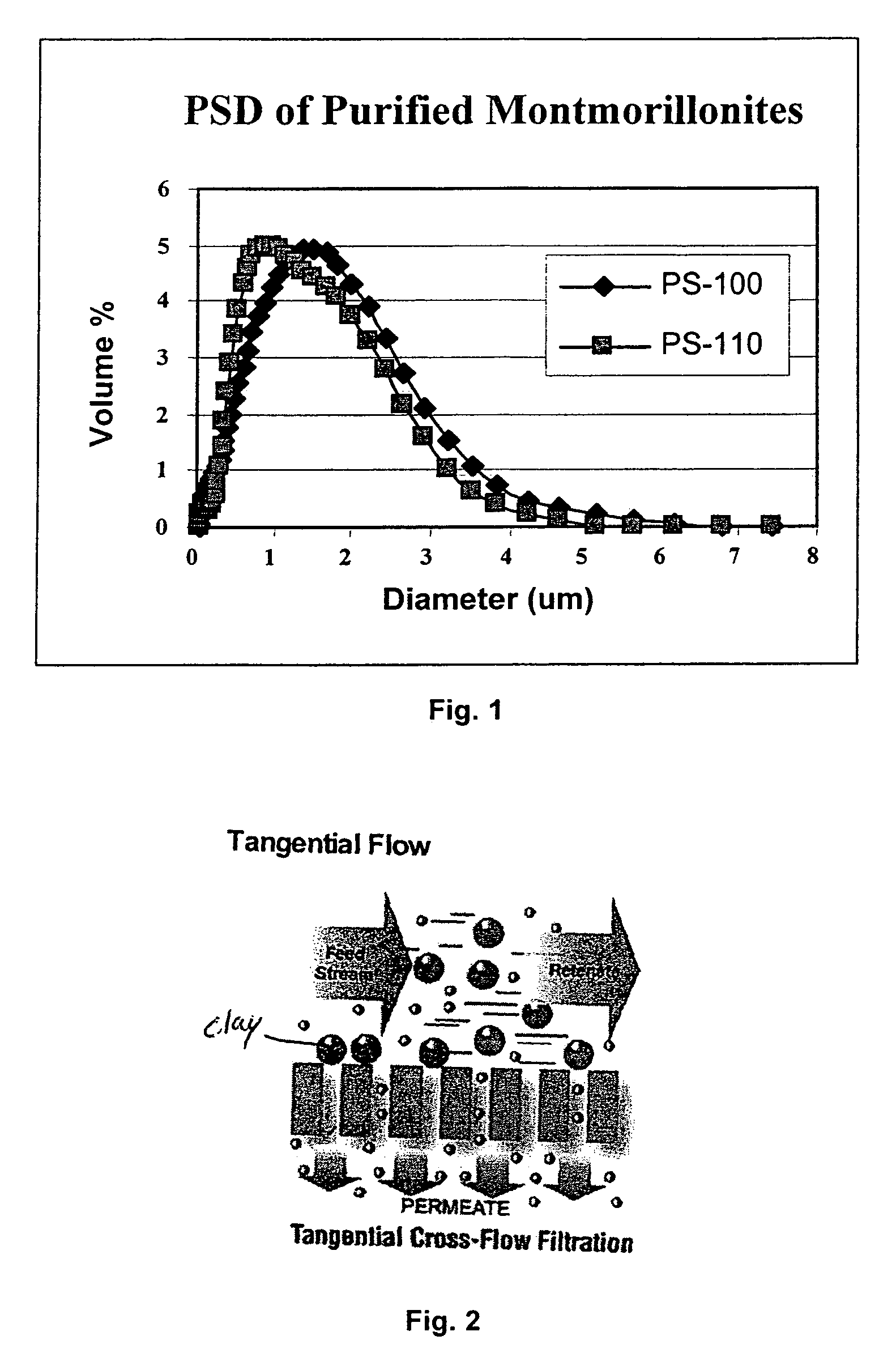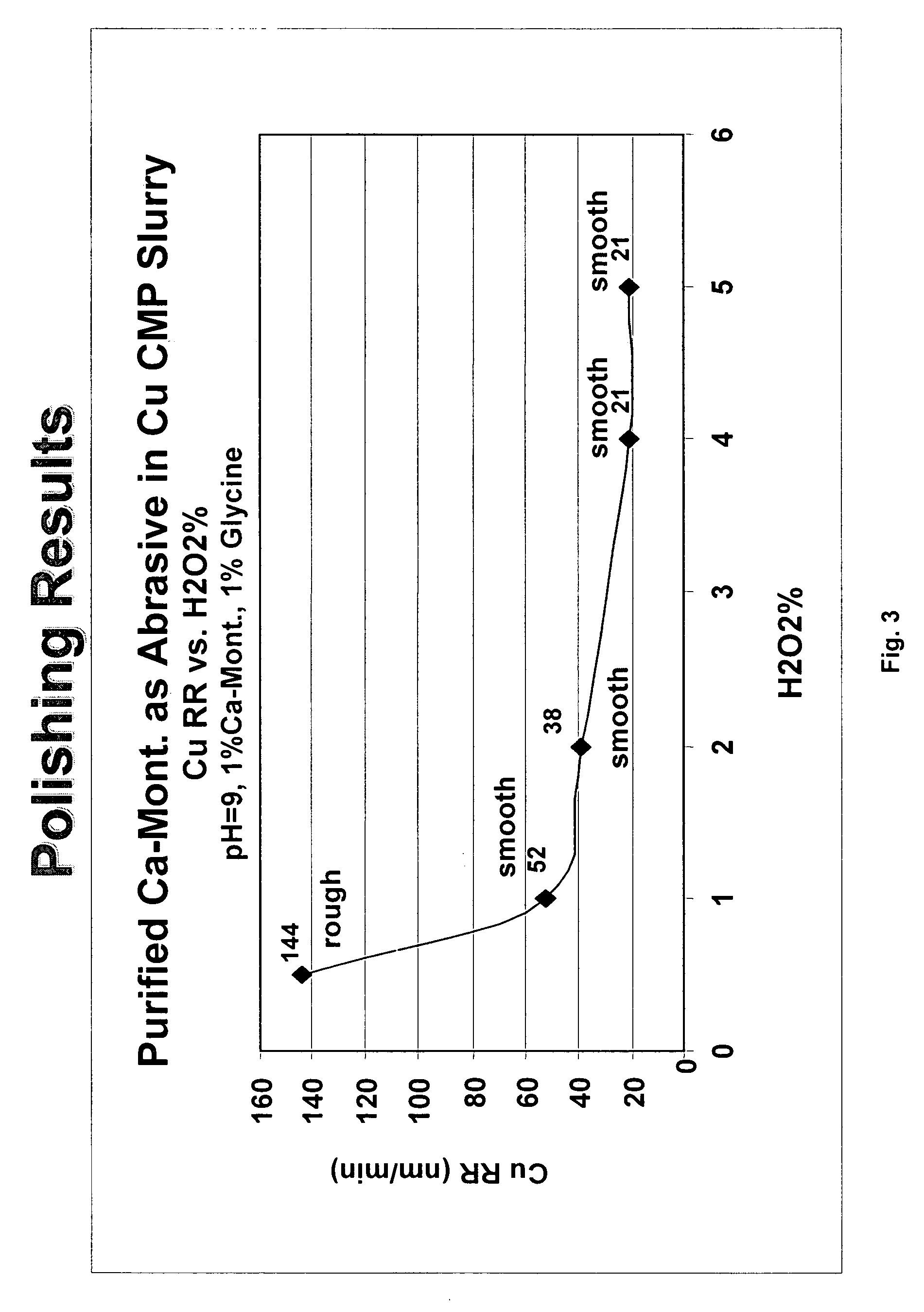Chemical-mechanical polishing (CMP) slurry and method of planarizing surfaces
a technology of chemical-mechanical polishing and slurry, which is applied in the direction of manufacturing tools, multi-stage water/sewage treatment, other chemical processes, etc., can solve the problems of poor surface quality, less than desirable polishing rate of polishing slurry, and inconvenient use of slurry
- Summary
- Abstract
- Description
- Claims
- Application Information
AI Technical Summary
Benefits of technology
Problems solved by technology
Method used
Image
Examples
examples
[0049]The following examples further illustrate the present invention but, of course, should not be construed as in any way limiting its scope.
[0050]FIGS. 3 and 4 are graphs showing the rate of copper removal using the slurry polishing compositions of the preferred embodiment (the calcium montmorillonite clay shown in Tables I and II. The polishing experiments were carried out using a bench-top Struers DAP-V polisher having a diameter of 31.75 mm for polishing 99.999% pure copper disks. The polishing pads were IC-1400 provided by Rodel, Inc. The pads were hand-conditioned with 220-grit sandpaper and a nylon brush before being used. The center-to-center distance between the disk and the pad was 5.5 cm. The polishing table and the disk holder are both rotated at a speed of 100 rpm in the same clockwise direction. The applied downward pressure is 5 psi and the slurry flow rate is 30 ml / min. The polishing rates were determined from the mass loss of copper from the disks during 3 min, 6 ...
PUM
| Property | Measurement | Unit |
|---|---|---|
| particle size | aaaaa | aaaaa |
| particle size | aaaaa | aaaaa |
| particle size | aaaaa | aaaaa |
Abstract
Description
Claims
Application Information
 Login to View More
Login to View More - R&D
- Intellectual Property
- Life Sciences
- Materials
- Tech Scout
- Unparalleled Data Quality
- Higher Quality Content
- 60% Fewer Hallucinations
Browse by: Latest US Patents, China's latest patents, Technical Efficacy Thesaurus, Application Domain, Technology Topic, Popular Technical Reports.
© 2025 PatSnap. All rights reserved.Legal|Privacy policy|Modern Slavery Act Transparency Statement|Sitemap|About US| Contact US: help@patsnap.com



